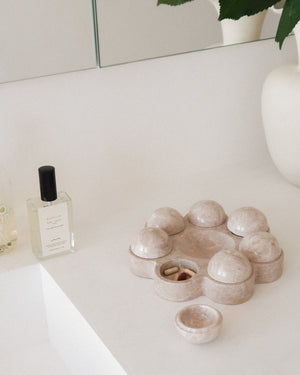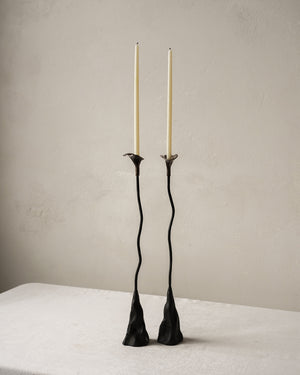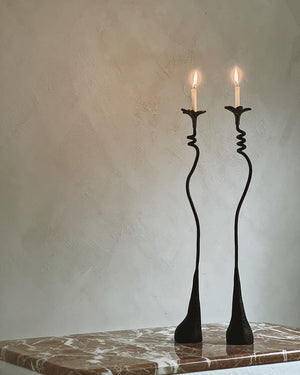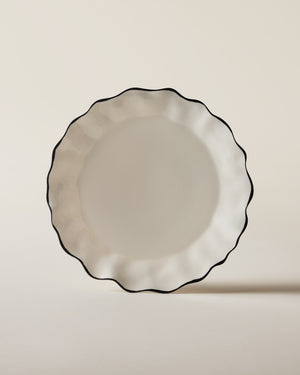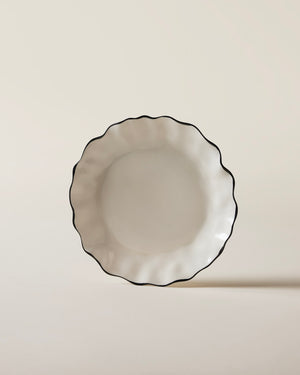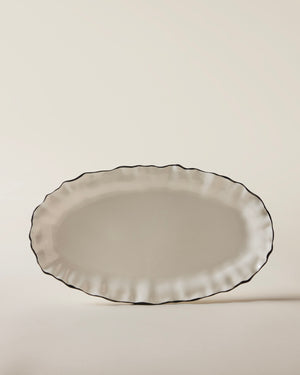QUEER CERAMICS W/ GIANFRANCO
Words by Brienne Walsh
Although homoerotic lust has always been a part of human existence, it was forbidden from being openly depicted in art and culture for much of the last two millennia. Gianfranco Briceño, a Peruvian artist, based in São Paulo, aims to make it mainstream in his photography and ceramics. "[Homoeroticism] is not an easy topic," he says. "There is prejudice within the queer scene that I'm part of, so it's on this subject that I see myself as an artist who needs to show this to the world."

In his latest work, which he refers to as "Queer Ceramics," Briceño normalizes homoerotic lust by framing it in the visual language of ancient depictions of mythological subjects. For example, Apollo, Dionysius, Neptune, Hermes, and Narcissus are shown as beautiful nude men adorning the sides of hand-shaped vessels or the supporting frames of candlesticks shaped like Doric columns. Often, Briceño borrows from the language of heteroerotic lust, depicting, for example, Neptune standing on a giant shell in a manner reminiscent of the Venus painted by Sandro Botticelli in the late 15th century.
 Medium Moon Jar III |
 Medium Moon Jar V |

The forms that Briceño carves are not imaginary. Instead, they are inspired by gay pornography as depicted in films and magazines from the 1960s and 70s and Briceño's own photographs of male models. Trained in advertising at the Pontifical Catholic University of Minas Gerais in Belo Horizonte, Brazil, Briceño worked as a photographer for over fifteen years before expanding his oeuvre to include ceramics. As a photographer, he often published his work in self-published fanzines, including Uncut and Snaps, which celebrate the nude male form in crisply rendered imagery that recalls the work of Bruce Weber and Wolfgang Tillmans. "I've always photographed in a free and naturalistic way - free from clothes, free from any prejudice about the naked body," he says.
 Achilles Set |
 Medium Moon Jar VII |

During the pandemic, Briceño started experimenting with clay and found the medium to be a natural extension of his photography practice. "A year ago, in the middle of the quarantine, I started to pave the way for my vision as an artist and to see other possibilities besides photography," he recently wrote on Instagram. "I found ceramics." Each of Briceño's ceramic pieces is unique, the result of a process that starts with a sketch and includes experimentation with mixing clays and firing them at different temperatures. The final work, while ultimately functional, becomes part of a larger performance in which Briceño photographs it alongside male models. In addition, these photography sessions are often turned into videos, which Briceño overlays with compositions by Beethoven, or Brazilian bossa nova from the 1960s, further strengthening the argument that his work is firmly rooted in established cultural legacies.

You don't have to be queer to appreciate Briceño's pieces in the same way you don't have to be straight to enjoy the photographs of Helmut Newton or the nude paintings of Titian. The unencumbered human form is always classic when rendered with skill and creative vision such as Briceño possesses.
 El Deseo Side Table |
 Candelabra I |

Brienne Walsh is a writer living in Savannah, Georgia. You can find her here >
Learn more about Gianfranco Briceño >
SHOP ALL GIANFRANCO BRICEÑO >
